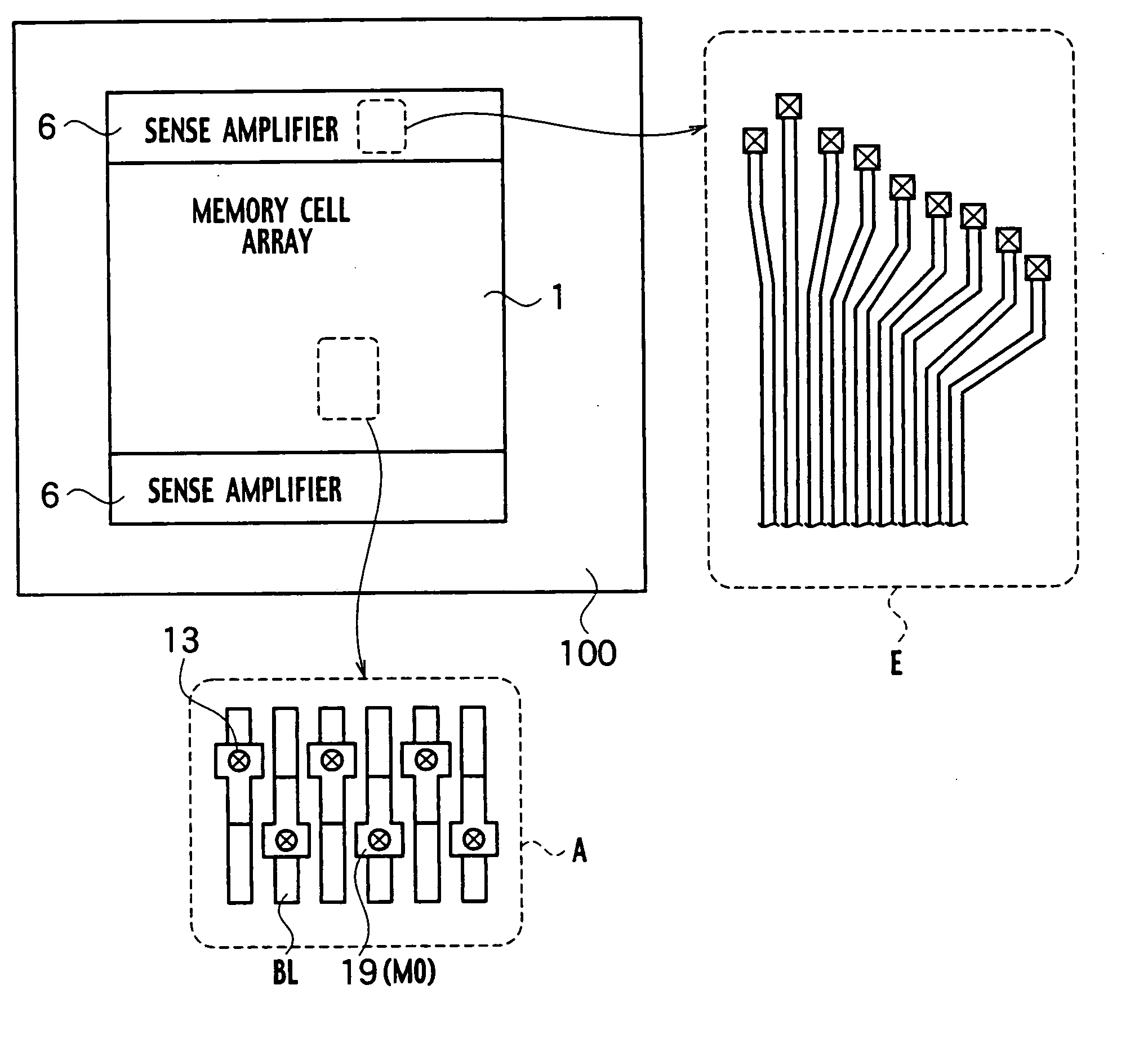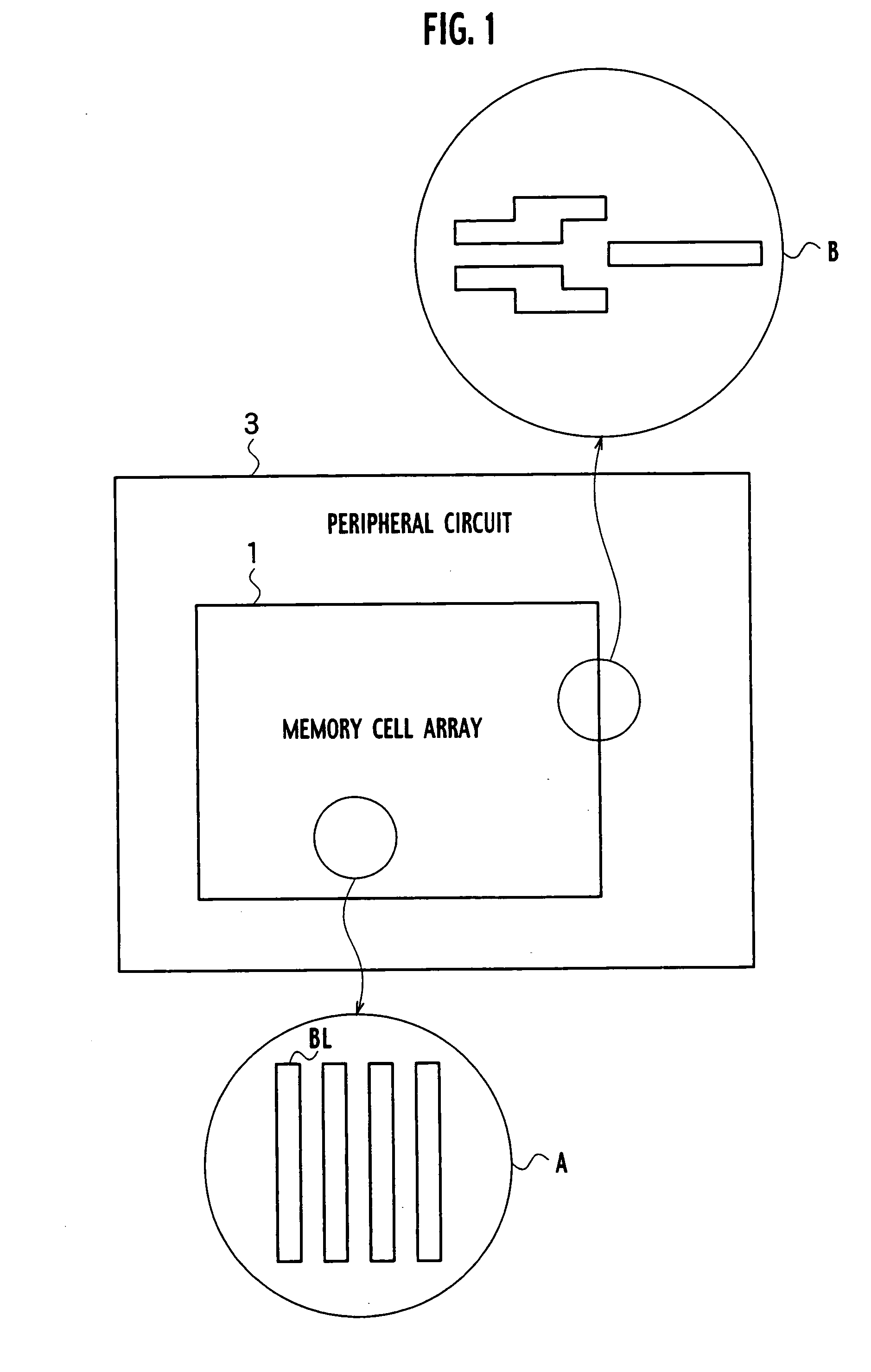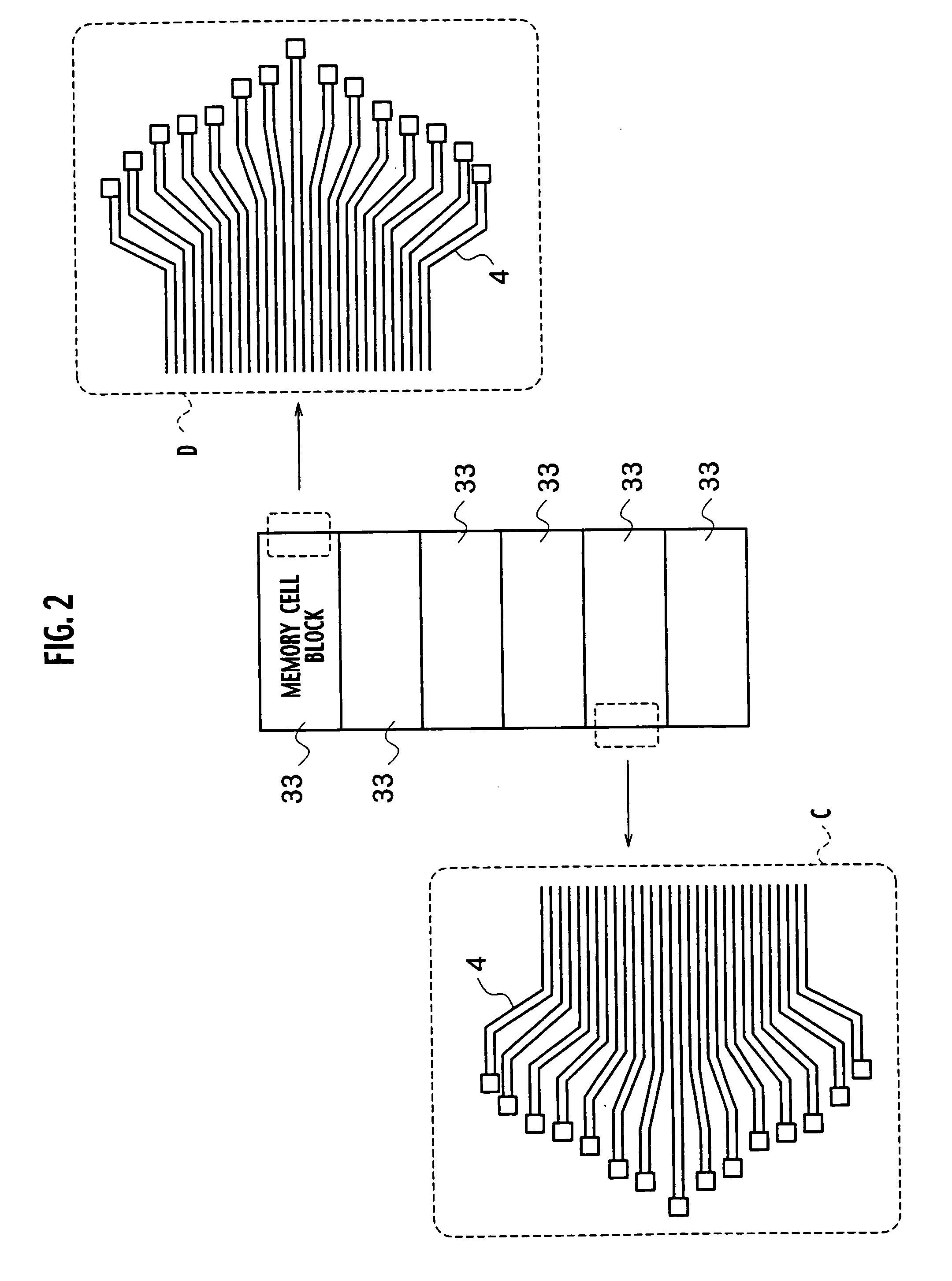Semiconductor memory
a semiconductor and memory technology, applied in the field of semiconductor memory, can solve the problem of inability to form a non-uniform pattern in the extended region, and achieve the effect of avoiding the formation of uniform patterns
- Summary
- Abstract
- Description
- Claims
- Application Information
AI Technical Summary
Problems solved by technology
Method used
Image
Examples
first embodiment
[0070] As shown in FIG. 19, a semiconductor memory according to the first embodiment of the present invention includes: multiple bit lines BLj−2, BLj−1, BLj, BLj+1, BLj+2, . . . (not shown in the drawing), which extend along the column length; multiple word lines WL1, WL2, . . . , which extend along the row length; and multiple word line contacts (borderless contacts CG) 14, which are formed at the ends of those word lines WL1, WL2, . . . , respectively; and have a structure where the word lines WL1, WL2, . . . are linearly arranged and the lengths of at least two adjacent word lines along the row length differ from each other.
[0071] Alternatively, the semiconductor memory is structured such that each of the word line contacts (borderless contacts CG) 14 is in contact with part of one of the multiple word lines WL1, WL2, . . . , but is not in contact with word lines adjacent to that one of the multiple word lines.
[0072] Alternatively, the semiconductor memory is structured such th...
first modified example
OF THE FIRST EMBODIMENT
[0087]FIG. 8 shows a plan view of a pattern for describing a step of a semiconductor memory fabrication method according to a first modified example of the first embodiment of the present invention; wherein 3L denotes the interval between a pair of select gate line SG1 patterns, which is prepared for bit line contacts (CB) 11. L denotes the minimum line and space (minimum line width) As shown with a dashed line in FIG. 8, a pattern structure of FIG. 8 may be achieved by removing only a single dummy interconnect DE through double exposure. For example, as shown in FIG. 8, the semiconductor memory, according to the first modified example of the first embodiment of the present invention, includes a contact forming region with dimensions three times the minimum line width L, which is formed by removing one of the multiple word line patterns and select gate line patterns through double exposure.
second modified example
OF THE FIRST EMBODIMENT
[0088]FIG. 9 shows a plan view of a pattern for describing a step of a semiconductor memory fabrication method, according to a second modified example of the first embodiment of the present invention, where 5L denotes the interval between the select gate line SG2 pattern and the select gate line SG1 pattern, which is prepared for bit line contacts (CB) 11. As shown with dashed lines in FIG. 9, a pattern structure of FIG. 9 may be achieved by removing only a single dummy interconnect DE and a single select gate line SG1 through double exposure. For example, as shown in FIG. 9, the semiconductor memory according to the second modified example of the first embodiment of the present invention, includes a contact forming region with dimensions five times the minimum line width L, which is formed by removing two of the multiple word line patterns and select gate line patterns through double exposure.
PUM
 Login to View More
Login to View More Abstract
Description
Claims
Application Information
 Login to View More
Login to View More - R&D
- Intellectual Property
- Life Sciences
- Materials
- Tech Scout
- Unparalleled Data Quality
- Higher Quality Content
- 60% Fewer Hallucinations
Browse by: Latest US Patents, China's latest patents, Technical Efficacy Thesaurus, Application Domain, Technology Topic, Popular Technical Reports.
© 2025 PatSnap. All rights reserved.Legal|Privacy policy|Modern Slavery Act Transparency Statement|Sitemap|About US| Contact US: help@patsnap.com



